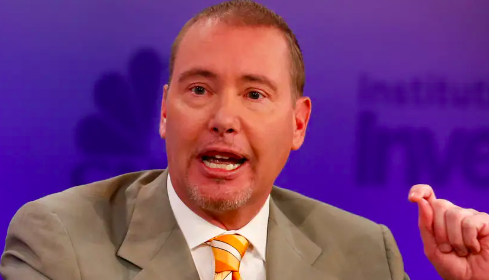Highest savings yields are topping inflation. Here’s why that’s important for savers

Personal finance fact: Your money loses purchasing power over time, especially if you keep it in a savings account that does not earn interest.
However, there is some good news for savers: the top savings yield has outpaced inflation for the sixth month in a row, according to Bankrate data.
Many top savings account annual percentage yields (APYs) are currently outpacing 3.7% inflation in the current savings rate environment. That was not the case a year ago, when inflation was more than twice as high.
Last summer, inflation reached 9.1%. And you weren’t going to get 9% on cash back then, either.
“However, in the long run, you want your cash earnings to be in the same zip code as inflation, just to keep your purchasing power,” says Greg McBride, CFA, Bankrate’s chief financial analyst.
Here are seven reasons why keeping pace with inflation is important.
1. A dollar today won’t buy as much as it will in the future
Prices tend to rise over time.
Money that does not keep up with inflation gradually loses purchasing power. So, in January 2019, $20 left in your old winter coat could have bought $20 worth of goods. To make up the difference in rising costs and maintain the same purchasing power, you’d need an extra $4.40.
That $20 at 4.06% APY would have earned $4.40 in interest over the same five-year period, but that type of yield on an FDIC-insured CD would have been difficult to find five years ago. According to Bankrate data, the closest option at the time would have been a 5-year CD at 3.40% APY. However, anything is better than nothing.
“If I have my money earning some percentage — even if it’s not exactly the same as inflation — and if I’m maximizing my savings, I’m getting closer to meeting my inflation needs when inflationary periods hit,” says Jill Schlesinger, certified financial planner and CBS News business analyst.
2. The highest savings yield does not always outperform inflation.
The absolute top savings yield is usually outpaced by inflation.
This graph compares the absolute top savings yields from August 2015 to August 2023, using the Consumer Price Index for all urban consumers.
Outside of federally insured accounts, higher yields may be available. However, if they are not federally insured, you are taking a risk. Higher yields may be capped and only available on certain balances at some banks.
“When inflation is 9%, all cash underperforms inflation,” says McBride. “However, over time, if you seek out the highest-yielding account, you’re giving yourself the best chance to keep up with inflation,” he adds.
Long-term inflation should be expected to be at least 3%, according to McBride.
3. However, you still want the highest possible APY.
Your priority should be the highest yield, as long as it is at a bank insured by the Federal Deposit Insurance Corporation (FDIC). However, because interest rates are generally variable, you should look for APY consistency.
You should also ensure that the account has a reasonable minimum opening deposit amount and that there are no fees that will reduce your competitive yield.
In a survey of 63 banks conducted in March, Bankrate discovered 25 “no excuses” savings or money market accounts. (“No excuses” means an account is available nationwide, has no monthly service fee, no minimum opening deposit requirement, and no minimum balance to earn the APY.)
4. In over 7 years, the average savings yield has failed to outperform inflation.
A savings account at the national average rate has only outpaced inflation once since August 2015. And some of the major banks are currently paying rates that are lower than the national average.
Those earning savings interest at or below the national average rate can better keep up with inflation by depositing funds in a savings account at an online FDIC-insured bank that pays a competitive yield.
Also, don’t forget about money sitting in a non-interest checking account that should be transferred to a savings account if it won’t be needed for several months. According to a March Bankrate survey, 16% of people were not earning any interest, and 14% were unsure how much interest they were earning.
“Now there’s a little more competition,” says CBS News’ Schlesinger. “The good news is that banks are now being threatened by higher-paying money market funds.” As a result, banks must now raise their credited interest rates. That’s good for customers.”
Assume, for example, that you saved $1,000 in April 2020. To keep up with inflation, you’d need an extra $183, or a total of $1,183, to buy the same items today that you would have bought with that money three years ago. According to Schlesinger.
5 You must account for inflation in your retirement planning.
Whether you are many years away from retirement or have already retired, you must keep up with inflation during retirement because you will likely earn less. And your peak earning years are almost certainly behind you.
“If you’re thinking about retiring and saying, ‘OK, I can live on $5,000 today,’ “Well, if $5,000 today isn’t the same as $5,000 in ten years, you’ll need more money,” Schlesinger says. “So your money must grow faster than the rate of inflation in order to simply meet your needs.”
Inflation will undoubtedly affect people in their twenties, with retirement still 40 years away.
—$10,000 in August 1983 is equivalent to $30,641.32 in August 2023.
Inflation will affect someone retiring in five or ten years, both before and after they retire.
—$10,000 in August 2018 is equivalent to $12,177 in August 2023.
—$10,000 in August 2013 is equivalent to $13,128 in August 2023.
Here’s how inflation affects money today compared to 20 and 30 years ago:
—$10,000 in August 2003 is equivalent to $16,632 in August 2023.
—$10,000 in August 1993 is equivalent to $21,203 in August 2023.
6. Inflation is unlikely to abate.
Even low inflation depletes your purchasing power if you do not keep up with it.
“Essentially, a growing economy will have inflation,” says Schlesinger. “What we’re looking for is a way to understand how higher prices can worm their way into your life in so many different ways.” So the Fed is genuinely concerned about inflation because it is extremely harmful. It has an effect on everyone.”
7. In 2022, high inflation and market losses were a double whammy.
Last year, the S&P 500 was down 18.1%. Inflation peaked at 9.1% in June of last year.
“If you haven’t been earning enough on your money, you can have, like, a double whammy,” Schlesinger says. “2022 is probably the worst year to think about in these terms because you have inflation (increasing) on one hand and financial markets collapsing on the other.” So you not only did not keep up with inflation, but you also lost money. That is not a good path to take. It’s probably part of the reason why people are so pessimistic right now. That they are being battered by the financial markets as well as inflation.”
In minutes, open an online savings account with a competitive yield.
Schlesinger says that you must ensure that you are not losing money due to inertia.
“Let me ask you a question: if you were walking down the street and saw $1,000, would you lean down and take it?” Sure, I would. “Lean down and pick up your money,” Schlesinger says. “That’s all I’m asking you to do.”
Money in an FDIC-insured online bank that adheres to the FDIC’s limits and guidelines is backed by the full faith and credit of the United States government.
“It’s risk-free money,” says Schlesinger. “OK? Where else in the world of investing can you find risk-free money with just a few keystrokes? And that’s all we’re asking of them. I understand you don’t want to do it. I know you have a million things to do. But would you do it for a thousand dollars? Would you do it for $500? Maybe you wouldn’t do it for $10, but you’d do it for something.”
The bottom line
When the yield on your money does not outpace the rate of inflation, it loses purchasing power. It’s easy to feel good about your savings, but the money you have now will not be able to buy as much in the future. It is a marathon, not a sprint, to keep up with inflation. You can ensure that you’re on track by putting your money in a high-yielding account, which can be found at online, FDIC-insured banks.






